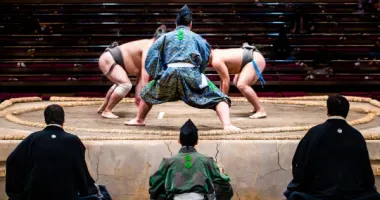The Todoroki Valley 等々力渓谷

The Todoroki Valley
J.R.
Tropical walk in Tokyo
To the southwest of Shibuya, in Setagaya, there is a small, tropical setting: the Todoroki Valley. A beautiful walk little known to tourists!
The valley in the city
In the borough of Setagaya, south of the capital, the Todoroki Valley is a well-kept secret. Much used by Tokyoites for a Sunday stroll, it is less known to foreign visitors. However, it is very easily accessible by public transport via the Tokyu-Oimachi line, getting off at the aptly named Todoroki station. In just 20 min and for around 200 yen ($1.75/1.50€) from Shibuya station, you can treat yourself to a little nature outing in the city's heart.
The valley is very close to the tram station. To get there, take a staircase from the road, at the level of a large thermometer which indicates the difference in temperature between the street and the steep valley - often several degrees! Going down the steps, you will feel the humidity rising. Once down, near the water of the Yazawa River, the jungle atmosphere is guaranteed! Pass under the red bridge (the "Golf Bridge") and follow the water. The gorge walls are covered with stately plants and trees, and a few houses can be seen through the foliage. The walk is enjoyable because you feel isolated from the city: no more noise from cars or car horns and pure air.
To read: Tokyo garden side
The Todoroki Valley can be visited in any season: in spring and summer, of course, to take advantage of the luxuriant nature and a bit of coolness in the heat of Tokyo, but also in autumn when the maple trees turn red. In winter, the spectacle is striking, especially if it snows. As so often in Japan, nature then takes on a new face...
The valley slopes are home to particular and well-protected biodiversity. Oaks are particularly numerous and zelkovas, also called Japanese elms, keyaki in Japanese. Many other typically Japanese trees, shrubs, and plants are present, such as mukonoki, inushid, or Acorus grass, which grows only in very humid environments.
To discover Japanese bonsai.
Fudo Temple
After crossing several bridges on the edge of the river - inhabited by a few ducks - you will arrive at a small temple where the Japanese gather for a few moments before continuing their walk. At this level, a tiny waterfall tumbles down the rock. The legend says that it was once much more significant: it then "roared" along the rocks, producing this sound nicknamed " todoroki " in Japanese, hence the valley's name.
Continuing the path on the right, you will reach the Fudo Buddhist temple, surrounded by hundreds of cherry trees and therefore highly recommended during hanami. The place has a tea house where you can enjoy tea and pastries.
This exotic place is covered for about 1 hr, the valley extending for about one kilometer. Arrived at the end of the valley, at the junction level towards the Fudo temple, you can also continue the walk by taking the large stairs on the right to discover the charming Japanese gardens Todoroki, located in height and always accessible.
A bamboo grove and a traditional garden are located downstream of another small open park on a large lawn, where it is pleasant to rest for a moment in the sun before returning to other nearby visits, for example, the Gotoku- Ji, the Maneki-Neko temple located a few kilometers away.
Finally, one last piece of advice: in summer, bring a mosquito repellent to walk around the valley, as the Japanese tiger mosquitoes can be pretty virulent in a humid environment!
To go further: Insects in Japan
Address, timetable & access
Address
Timetable
Todoroki Station (Tokyo-Oimachi Line)













































